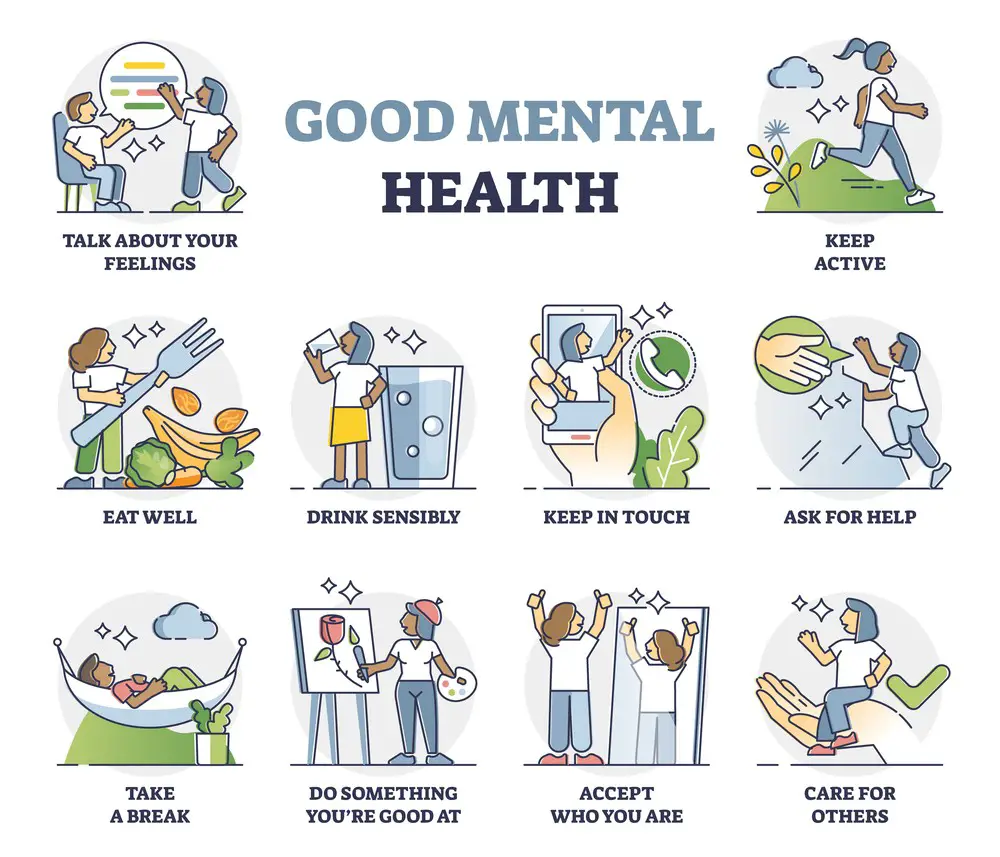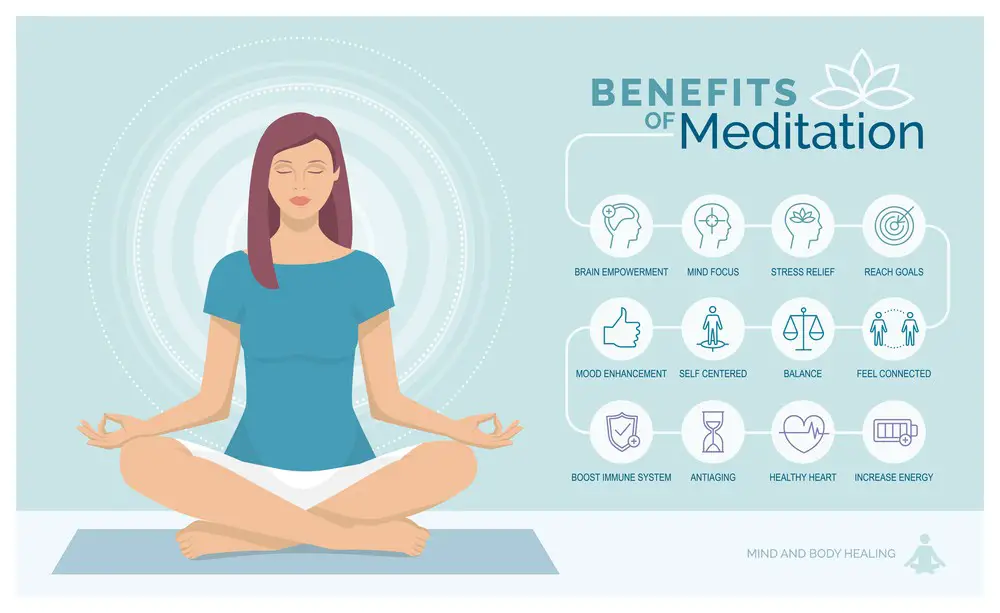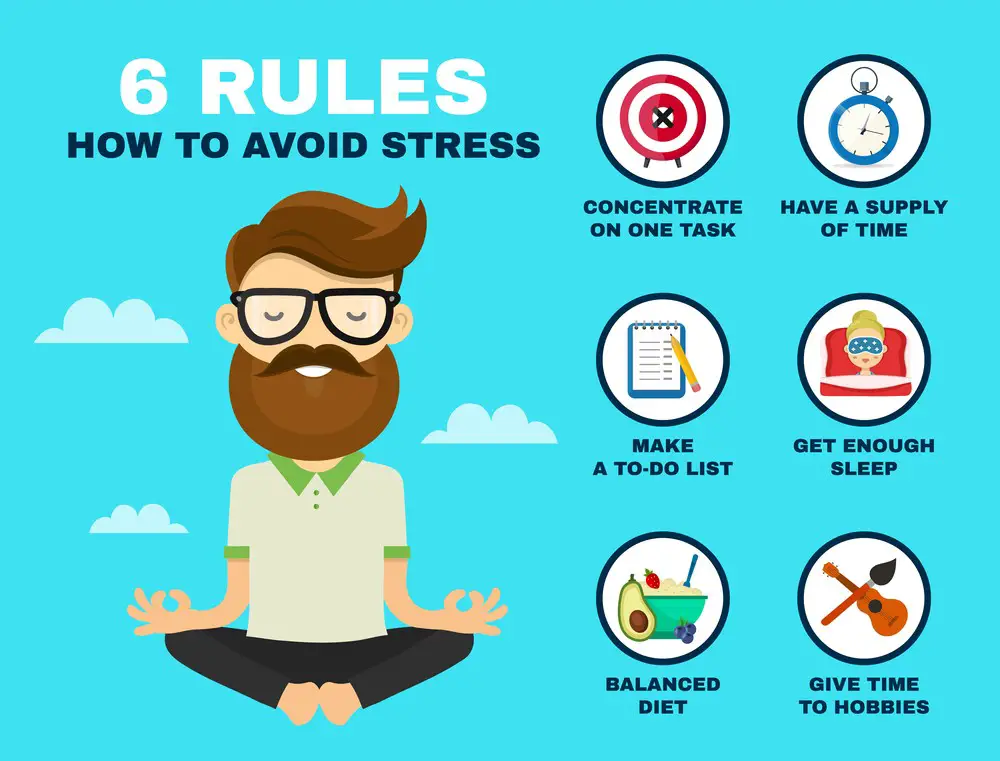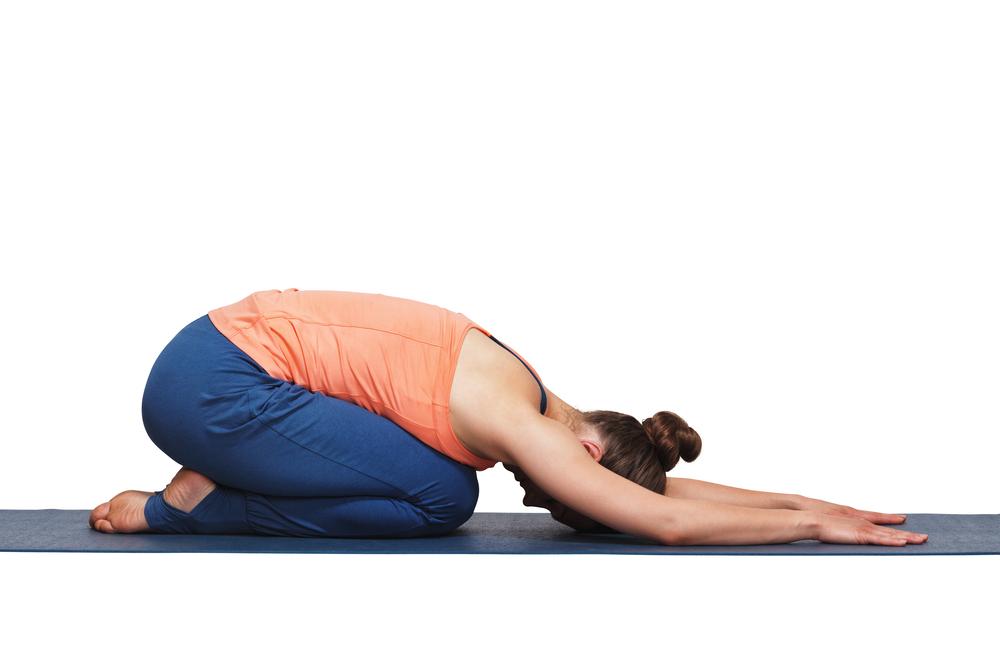As a BetterHelp affiliate, we receive compensation from BetterHelp if you purchase products or services through the links provided
Trauma release exercises (TRE) are a groundbreaking way to help individuals cope with stress, tension, and trauma physically and mentally. Developed by Dr. David Berceli, TRE is a series of exercises designed to activate the body’s natural reflex of shaking or vibrating, allowing the release of deep muscular patterns of stress and tension. These exercises nurture a calm and stable nervous system while promoting personal resilience and growth.
TRE is based on the understanding that traumatic experiences can be embedded in our bodies, contributing to physical and mental health issues if not adequately addressed. These exercises help individuals release and heal from the traumatic energy manifested in their bodies. By engaging in TRE, you can gain improved physical health and a stronger sense of mental well-being.
Incorporating TRE into your routine can have long-lasting positive effects on your overall health. These exercises are simple to learn and can be practiced at home or in group settings. Through consistent practice, you will heal and grow more robust physically, emotionally, and mentally.
Key Takeaways
- Trauma-release exercises activate the body’s natural reflex to release deep-rooted tensions.
- Engaging in TRE can improve your physical health and mental well-being.
- TRE can be practiced independently or in groups to promote healing and growth.
Understanding Trauma
 Types of Trauma
Types of Trauma
Trauma can come in many forms, and it’s essential to recognize that everyone’s experience is unique. Some common types of trauma include:
- Physical or emotional abuse
- Neglect or abandonment
- Violent experiences, such as war or assault
- Accidents or natural disasters
Understanding the different types of trauma can help you become more aware of how they might be affecting your life or the lives of others around you.
Repercussions of Trauma
The effects of trauma can be both physical and psychological. Some common repercussions include:
- Anxiety, depression, or post-traumatic stress disorder (PTSD)
- Flashbacks or intrusive memories
- Difficulty with sleep or concentration
- Changes in appetite or energy levels
- Chronic pain or physical ailments
These effects can be long-lasting and challenging to cope with. It’s essential to seek support from a mental health professional if you’re struggling with the aftermath of traumatic experiences.
 Trauma and Mental Health
Trauma and Mental Health
Trauma can have a significant impact on your mental health. Conditions like PTSD, anxiety, and depression can arise after experiencing a traumatic event. These conditions can affect your daily life and relationships, making it essential to address them and seek help when needed.
Trauma Response Mechanisms
When confronted with a traumatic event, your body employs several response mechanisms to help you cope. The fight, flight or freeze response is an automatic reaction designed for survival. However, this response can sometimes be dysregulated, leading to ongoing negative emotions and dissociation. Awareness of your body’s response mechanisms is essential in navigating the healing process.
Trauma in Relationships
Trauma can also impact relationships with others, such as parents, spouses, or friends. You might find it difficult to trust, communicate, or maintain healthy boundaries in the wake of traumatic experiences. Recognizing and addressing these challenges is essential to foster healthy, supportive relationships.
By expanding your understanding of trauma and its effects, you can better support yourself and others on the journey to healing and recovery.
The Method of Trauma Release Exercises
Origin and Propagation
Trauma Release Exercises (TRE) were developed by Dr. David Berceli, a certified TRE provider who has worked with people experiencing trauma in the Middle East, Africa, and worldwide. TRE intends to provide a simple, self-administered technique for individuals to release tension and trauma, promoting resilience and overall well-being.
Understanding TRE
TRE consists of exercises designed to activate your body’s natural tremoring mechanism. This mechanism is part of the autonomic nervous system and is a natural reflex that helps release tension and stress. By engaging in these exercises, you can tap into this reflex, assisting your body in healing from the effects of trauma.
Here are some key points to remember:
- TRE is a self-administered program.
- It helps release deep muscular and fascial patterns of stress and trauma.
- Certified TRE providers are trained to guide and support those practicing the exercises.
Science behind TRE
The science behind TRE is rooted in the understanding that our body has a natural reflex mechanism to release tension and stress through tremors. These tremors are involuntary, occurring within the autonomic nervous system. By intentionally engaging these tremors through specific exercises, the body can release accumulated stress and trauma, potentially reducing symptoms of anxiety, depression, and post-traumatic stress disorder (PTSD).
Remember that although TRE may be a valuable tool for trauma recovery, it’s essential to consult with a healthcare professional before incorporating it into your wellness routine, especially if you have a history of physical injuries or are currently receiving therapy.
By practicing TRE under the guidance of a certified provider, you can take a proactive approach to your healing journey and tap into your body’s innate ability to release tension and trauma.
TRE and Physical Health

Impact of TRE on Physical Health
TRE (Tension and Trauma Releasing Exercises) can have a significant impact on your physical health, as it helps release deep muscular patterns of stress, tension, and trauma. This process can alleviate physical and emotional strain, ultimately improving overall well-being.
Regular practice of TRE can contribute to reducing chronic pain, improving muscle tension, and promoting better posture. By activating a natural reflex mechanism of shaking or vibrating, your body can let go of stored stress, calming down your nervous system.
Exercise Steps in TRE
Here’s a brief overview of some TRE exercises to give you an idea of how they can help improve your physical health:
- Exercise 1: Stand with your feet hip-width apart, slightly bent at the knees. Gently sway side to side, forward, and back to loosen your hip joints and lower back.
- Exercise 2: Stand up against a wall with your feet shoulder-width apart. Slowly slide down the wall, bending your knees until they are at a 90-degree angle. Hold this position for about 30 seconds, then rise back up. Repeat a few times to activate your leg muscles and build strength.
- Exercise 3: Stand straight with your feet shoulder-width apart. Slowly bend down and reach for your toes. If you can’t touch your toes, reach as far as possible without straining. Hold this position for a few seconds, then slowly rise back up. Repeat this a few times, feeling the stretch in your hamstrings, calves, and lower back.
- Exercise 4: Lie on your back and place your feet on the ground, hip-width apart. Slowly lift your hips, engaging your glutes and core muscles. Hold this position for a few seconds, then slowly lower your hips back down. Repeat this exercise a few times, focusing on maintaining proper alignment throughout the movement.
- Exercise 5: Sit on the ground with your legs extended in front of you. Gently reach towards your toes and hold the position for a few seconds. This exercise helps release tension in your hamstrings, calves, and lower back, improving flexibility and promoting relaxation.
Remember to consult your healthcare provider before starting these exercises if you have a history of physical injuries. Engaging in TRE regularly can positively influence your physical health and well-being, making it an essential tool in managing stress and tension. Get started today and experience the benefits for yourself!
TRE and Mental Well-being
Emotions and TRE
TRE, or Tension and Trauma Release Exercises, is an effective way to help you release deeply-held emotional and physical stress. These exercises promote relaxation and can lead to inner peace, making it easier to deal with daily stressors. By better regulating your emotions, TRE can support your overall mental well-being.
A key takeaway: TRE can help manage emotions and improve mental well-being.
 Meditation and Mindfulness in TRE
Meditation and Mindfulness in TRE
Meditation and mindfulness practices share similarities with TRE, focusing on reducing stress and promoting emotional well-being. When combined with TRE, meditation, and mindfulness can further enhance the benefits of TRE exercises by calming the mind and promoting self-awareness.
Strategies to combine meditation and TRE
- Start with a brief meditation session to calm your mind before performing TRE exercises
- Practice mindfulness during the TRE exercises, being fully present as you perform the shaking movements
- End the session with a mind-centered meditation to reflect on the experience and any emotions that surfaced
 TRE and Chronic Stress
TRE and Chronic Stress
Chronic stress negatively impacts your mental health, resulting in issues such as anxiety, depression, and high cortisol levels. Fortunately, TRE is a fantastic technique for addressing chronic stress. Engaging in a regular TRE practice can release stored tension, reduce stress hormone levels, and ultimately support your mental well-being.
Tips for using TRE to combat chronic stress
- Create a regular TRE routine by setting aside time for the exercises at least once per week
- Combine TRE with other stress-reduction strategies, such as meditation and mindfulness.
- Listen to your body and adjust the intensity of the exercises to fit your current stress levels.
Insomnia and TRE
Insomnia is often linked to stress and anxiety, which can negatively impact your mental health. By releasing stress and tension from your body, TRE exercises may help improve your sleep quality and overall wellness. If you struggle with insomnia, consider including TRE in your daily routine to enhance relaxation and promote a good night’s rest.
Bullet points for integrating TRE for better sleep
- Perform TRE exercises in the evening to unwind and relax before bedtime
- Create a comfortable, calm space for TRE exercises to help facilitate relaxation
- Consider combining TRE with other sleep-promoting activities like gentle stretches, deep breathing exercises, or a warm bath
In summary, TRE is a valuable tool supporting your mental well-being through regulating emotions, reducing chronic stress, and improving sleep quality. TRE can become essential to your mental health toolkit through regular practice and integration with meditation and mindfulness.
Practical Aspects of TRE
Safety in TRE
TRE (Trauma Release Exercises) are designed to help you safely release tension and stress in your body. Remember that during these exercises, you should listen to your body and avoid pushing yourself too hard. Remember, it’s crucial to maintain safety while practicing TRE to ensure the healing process remains effective and gentle.
Handling Flashbacks and Triggers
While working on TRE, you may encounter flashbacks or triggers related to your past traumatic experiences. It’s essential to be prepared to handle these situations by focusing on your coping mechanisms. Employ grounding techniques, breathing exercises, or visualization to redirect your mind’s focus and minimize discomfort.
Working with a Certified TRE Provider
Working with a certified TRE provider is highly recommended to ensure a safe and effective TRE journey. In addition to facilitating a supportive environment, certified professionals guide you through the exercises and help you adjust your technique when needed. They also provide valuable feedback and insights to optimize your personal growth.
TRE Worksheets
To help you stay on track, you may choose to incorporate the use of TRE worksheets into your practice. These worksheets facilitate monitoring your progress, setting goals, and identifying patterns in your stress response. With these resources, you can better understand how TRE impacts your well-being.
Medication and TRE
While TRE aims to alleviate stress and tension through physical exercises, it’s essential to recognize that medication might be an additional component of your mental health journey. Consult with your mental health professional about whether medications should be part of your overall treatment plan and how they coincide with TRE.
Coping Mechanisms in TRE
Implementing coping mechanisms during your TRE practice can help you manage any emotional upheaval that may arise. Some strategies that may assist you include:
- Deep breathing exercises
- Engaging in mindfulness meditation
- Practicing self-compassion
- Distracting yourself with enjoyable activities
- Connecting with supportive individuals
Remember that coping mechanisms are highly personal, so find what works best during your healing process.
Grounding Techniques in TRE
Grounding techniques are valuable tools in managing intense emotions brought on by flashbacks or triggers during TRE. Examples of grounding techniques you can employ are:
- Focusing on your breath
- Touching or holding onto a comforting object
- Listing five things you can see, hear, or feel
- Repeating a personal mantra or affirmation to yourself
Grounding techniques anchor your mind and body, returning you to the present moment.

When to Seek Professional Help
While practicing TRE, if you find yourself struggling with emotional distress, intense anxiety, or other concerning symptoms, it’s essential to seek the help of a mental health professional. Therapeutic modalities such as psychotherapy or counseling can complement TRE and offer additional support to address your unique needs.
Key Takeaway: Practicing TRE safely and effectively involves working with certified providers, acknowledging your triggers or flashbacks, and incorporating personalized coping and grounding techniques. Always remember to prioritize your mental health by seeking professional help if needed.
Conclusion
In conclusion, practicing trauma release exercises regularly can help you heal from past traumatic experiences, restore balance in your body and mind, build resilience, and find inner peace. Remember, recovery is a continuous process, and you must be patient with yourself as you progress through these exercises.
Trauma release exercises provide an opportunity to:
- Heal by releasing stored tension and energy from the body.
- Balance your nervous system, allowing yourself to experience a greater sense of calm and relaxation.
- Build resilience in the face of future challenges by increasing your ability to cope with stress.
- Experience peace through the connection between mind and body, fostering a deep sense of inner harmony.
As you implement trauma release exercises into your self-care routine, consider the following tips:
- Practice regularly to maintain the progress you’ve made in your trauma recovery journey.
- Be gentle with yourself, knowing that healing takes time and requires consistent effort.
- Listen to your body and respect its limits, allowing for rest and adjustments.
- Seek support from a professional therapist or counselor, especially if you are struggling with severe trauma symptoms.
In essence, by integrating trauma-release exercises into your life, you are empowering yourself to regain control and move forward on the path of healing and self-discovery. Embrace the process and remember that you can achieve a renewed sense of well-being and inner peace with patience and dedication.
Frequently Asked Questions
What are the steps for TRE exercises?
TRE (Tension and Trauma Releasing Exercises) involves a simple set of exercises designed to trigger a natural tremor reflex in your body. This shaking can help release long-held tension patterns and promote a sense of connection and ease. Remember, it’s essential to consult your healthcare provider before starting these exercises, especially if you have a history of physical injuries.
How can I find TRE videos on YouTube?
To find TRE videos on YouTube, type “TRE exercises” or “trauma-releasing exercises” in the search bar. You’ll see numerous instructional videos from certified practitioners guiding you through the process. Choose a reputable source to follow and pay attention to any specific modifications or guidance they provide.
Which exercises focus on releasing hip trauma?
Hip trauma can be reduced through hip circles, pigeon poses, and butterfly stretches. These movements promote flexibility, increase circulation, and help release stored hip tension. Be mindful of your body’s limits, and adjust the exercises if you experience discomfort.
What are some somatic exercises for trauma release?
Somatic exercises, like grounding techniques, help you reconnect with your body and process trauma. Examples of bodily exercises include:
- Running water over your hands and focusing on the temperature
- Deep diaphragmatic breathing
- Progressive muscle relaxation
- Mindful walking
These activities can provide a sense of calm, presence, and safety in the body.
Are trauma release exercises safe during pregnancy?
If you’re pregnant, it’s essential to consult your healthcare provider before engaging in any trauma-release exercises. While some exercises might be beneficial during pregnancy, others may not be suitable. Always prioritize your safety and your unborn child by seeking professional advice.
How to release shoulder trauma through exercises?
Try gentle stretches and movements targeting the upper body area to release shoulder trauma. Some examples include:
- Shoulder rolls
- Neck stretches
- Eagle pose (yoga)
- Wall angels
Be mindful of your body’s limits, and adjust the exercises as needed to prevent discomfort or strain. Consistency is key; practicing these stretches regularly can help effectively alleviate shoulder tension.
About Jacob Maslow
After surviving the traumatizing events of 9/11, I took it upon myself to heal through helping others. I’m the primary caregiver of my children and understand from first-hand experience the lonely paths you have to walk as a partner and parent when leaving an unhealthy relationship.
We’re all echoing in a dark space that doesn’t have to be this empty, and that’s been my mission since finding solace and recovery in therapy: To help comfort others who are still in shock and at the prime of their struggle.
I came across BetterHelp after searching for this type of community. I wanted to belong to a body of proactive therapists and supportive therapy veterans who allowed me to see other sides of the story.
It was unconventional, and that’s what attracted me most. During my most challenging times, when my ex-wife completely cut me off from my children, I found comfort and clarity through BetterHelp.
Instead of being chained to a strict therapist recommendation, I was in charge of who I felt understood my struggle most. That allowed me to find my true peace, as I was reunited with those who read behind my words and had first-hand experience with my trauma.
Recovery is a choice; with BetterHelp, that choice will be a few clicks away. You can join their couples-oriented platform, Regain.us, for those stuck with family estrangement and toxic relationship patterns.

- Stress Management: What is the Relationship Between Stress and Addiction? - June 28, 2024
- Exploring Techniques to Maintain a Healthy Lifestyle without Drugs - May 28, 2024
- How Acupuncture Helps Treat Chronic Fatigue Syndrome - May 28, 2024
This site contains affiliate links to products. We will receive a commission for purchases made through these links.


 Types of Trauma
Types of Trauma Trauma and Mental Health
Trauma and Mental Health Meditation and Mindfulness in TRE
Meditation and Mindfulness in TRE TRE and Chronic Stress
TRE and Chronic Stress

 Who Stands to Gain and Who Might Not: Understanding the Scope of Trauma Release Exercises
Who Stands to Gain and Who Might Not: Understanding the Scope of Trauma Release Exercises

